The head of a Gaza City hospital that treated some of the Palestinians wounded in the bloodshed surrounding an aid convoy said Friday that more than 80% had been struck by gunfire, suggesting there was heavy shooting by Israeli troops.
At least 115 Palestinians were killed and more than 750 others injured Thursday, according to health officials, when witnesses said nearby Israeli troops opened fire as huge crowds raced to pull goods off an aid convoy. Israel said many of the dead were trampled in a crowd surge that started when desperate Palestinians in Gaza rushed the aid trucks.
Israel said its troops fired warning shots after the crowd moved toward them in a threatening way.Dr. Mohammed Salha, the acting director of Al-Awda Hospital, told The Associated Press that of the 176 wounded brought to the facility, 142 had gunshot wounds and the other 34 showed injuries from a stampede.
He couldn’t address the cause of death of those killed, because the bodies were taken to government-run hospitals to be counted.Dr. Husam Abu Safyia, director of Kamal Adwan Hospital, said the majority of the injured taken there had gunshot wounds in the upper part of their bodies, and many of the deaths were from gunshots to the head, neck or chest.
Also Read Only grain ships from Black Sea and for Iran still crossing red sea ananlysts
The bloodshed underscored how the chaos of Israel’s almost 5-month-old offensive has crippled the effort to bring aid to Gaza’s 2.3 million Palestinians, a quarter of whom the United Nations says face starvation.
The U.N. and other aid groups have been pleading for safe corridors for aid convoys, saying it has become nearly impossible to deliver supplies in most of Gaza because of the difficulty of coordinating with the Israeli military, ongoing hostilities and the breakdown of public order, including crowds of desperate people who overwhelm aid convoys.
U.N. officials say hunger is even worse in the north, where several hundred thousand Palestinians remain even though the area has been isolated and mostly levelled since Israeli troops launched their ground offensive there in late October. U.N. agencies haven’t delivered aid to the north in more than a month because of military restrictions and lack of security, but several deliveries by other groups reached the area earlier this week.
The United Nations says a U.N. team that visited Shifa Hospital in Gaza City reported “a large number of gunshot wounds” among the more than 200 people still being treated for injuries Friday from Thursday’s chaotic aid convoy scene.U.N. Secretary-General Antonio Guterres and several European leaders have called for an independent, credible investigation into what happened.
Acknowledging the difficulty of getting aid in, United States President Joe Biden said Friday the U.S. soon will begin airdropping assistance to Gazza and will look for other ways to get shipments in, “including possibly a marine corridor.”
The announcement came hours after a Jordanian plane over northern Gaza dropped packages attached to parachutes, including rice, flour and baby formula.“Innocent lives are on the line, and children’s lives are on the line. We won’t stand by until we get more aid in there,” Biden said. “We should be getting hundreds of trucks in, not just several.”
Aid officials have said airdrops are an incredibly expensive way of distributing assistance.
“I don’t think the airdropping of food in the Gaza Strip should be the answer today. The real answer is: Open the crossing and bring convoys and bring meaningful assistance into the Gaza Strip,” Philippe Lazzarini, head of the U.N. agency for Palestinian refugees, said Thursday.
Thursday’s convoy wasn’t organized by the U.N. Instead, it appeared to have been monitored by the Israeli military, which said its troops were on hand to secure it and ensure it reached northern Gaza. United Nations spokesperson Stephane Dujarric said Friday’s convoy was also “coordinated and deconflicted with the Israeli authorities” because they control Gaza.“We’ve been trying to do that every day,” he said. “We have not been successful every day.”
Thursday’s shooting and bloodshed raise questions about whether Israel will be able to keep order if it goes through with its postwar plans for Gaza.Israeli Prime Minister Benjamin Netanvahu has put forward a plan for Israel to retain open-ended security and political control over the territory — an effective reoccupation — after Hamas is destroyed.
Under the plan, Palestinians picked by Israel would administer the territory, but it’s uncertain if any would cooperate.That would leave Israeli troops — who, throughout the war, have responded with heavy firepower when they perceive a possible threat — to oversee the population during the massive postwar humanitarian and reconstruction operation envisioned by the international community.
Israel launched its air, sea and ground offensive in Gaza in response to Hamas’ Oct. 7 attack into Israel, in which militants killed around 1,200 people, mostly civilians, and abducted around 250 others. Since the assault began, Israel has barred entry of food, water, medicine and other supplies, except for a trickle of aid entering the south from Egypt at the Rafah crossing and Israel’s Kerem Shalom crossing.
Despite international calls to allow more aid in, the number of supply trucks is far less than the 500 that came in daily before the war.
The Gaza Health Ministry said the Palestinian death toll from the war has climbed to 30,228, with another 71,377 wounded. The ministry doesn’t differentiate between civilians and combatants in its figures, but says women and children make up around two-thirds of those killed.Thursday’s bloodshed took place as a convoy of around 30 trucks entered Gaza City before dawn.
Many of the wounded described a scene of desperation and chaos, with people climbing on the moving trucks to get bags of flour when Israeli troops began shooting, including from a tank.“I was holding a bag of flour on my way home. They shot me in the right foot and in the left foot. Shells were fired above our heads, gunfire,” said Sameer Salman, who was being treated in Kamal Adwan.
The Israeli military said dozens of the deaths were caused by a stampede and that some people were run over by trucks as drivers tried to get away.Rear Adm. Daniel Hagari, the chief military spokesperson, said Israeli troops guarding the area fired shots “only towards a threat after the crowd moved toward them in a way that endangered them.” He said the troops “didn’t open fire on those seeking aid.”
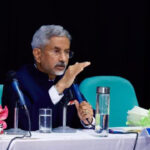
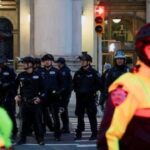
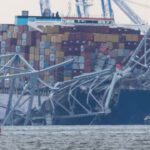


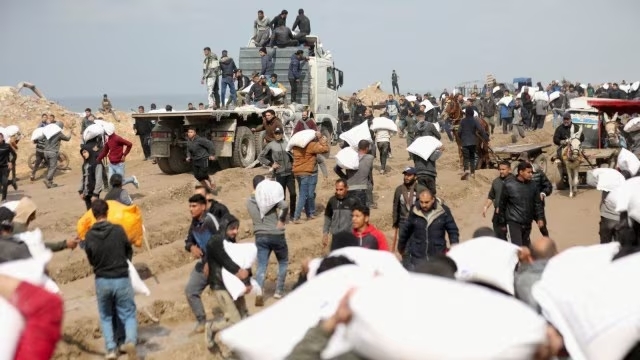
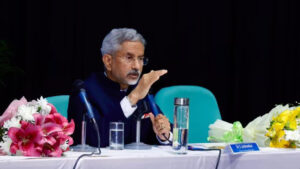
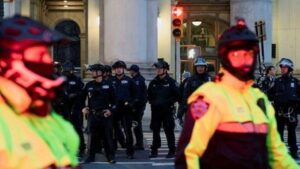
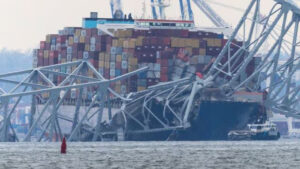

More Stories
Daughter beats mother to death with cooking pan in US, admits crime calling 911
Cranes arriving to start removing wreckage from deadly Baltimore bridge collapse
TikTok bill faces uncertain fate in US Senate as legislation to regulate tech industry has stalled